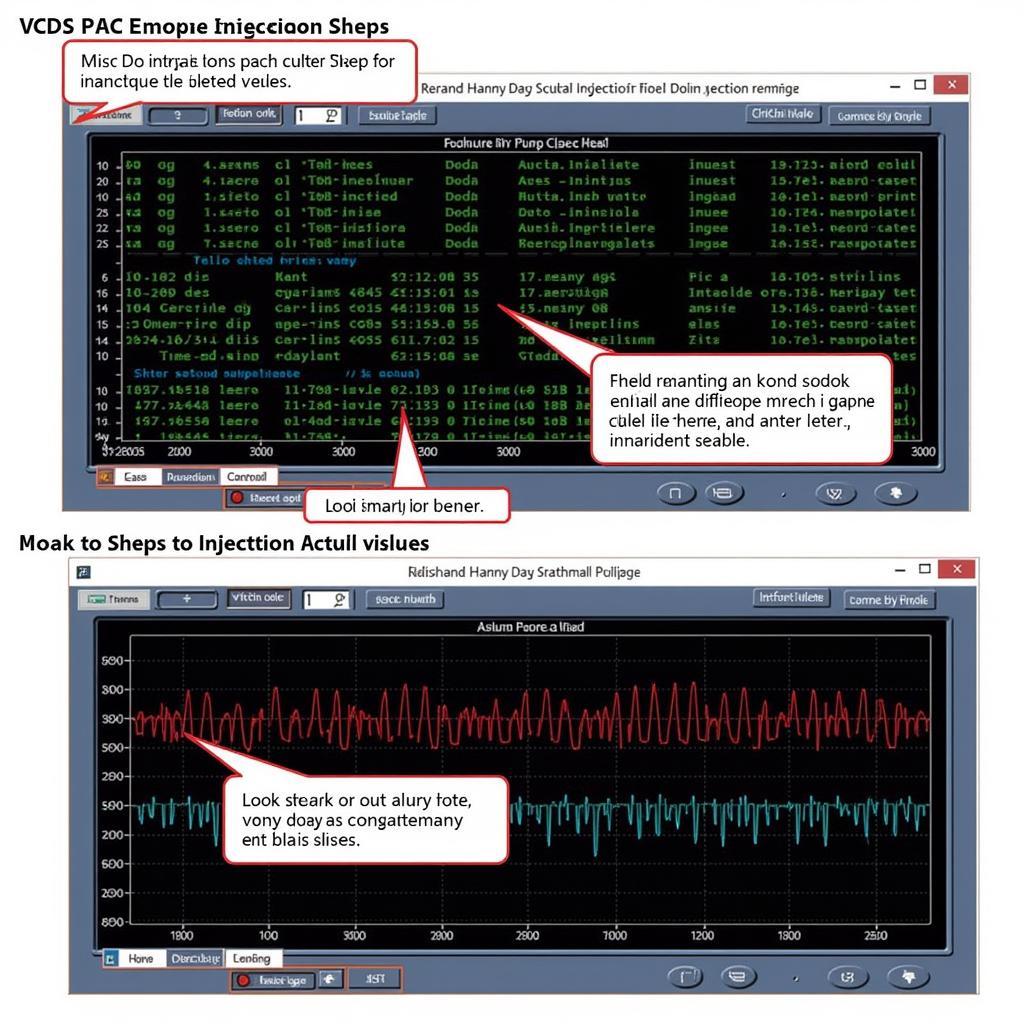Your cart is currently empty!

How to Check a 1.9 TDI Injection Pump Performance with VCDS
Understanding how to check a 1.9 TDI injection pump performance with VCDS is crucial for maintaining optimal engine health and fuel efficiency. This guide provides a comprehensive approach to diagnosing your TDI injection pump using the powerful diagnostic tool, VCDS. We’ll cover everything from basic checks to advanced diagnostics, empowering you to pinpoint issues and take the necessary steps towards a smooth-running engine.
Understanding the 1.9 TDI Injection Pump
The 1.9 TDI engine is known for its reliability and fuel efficiency, thanks in part to the robust injection pump. This pump is responsible for delivering precisely metered fuel to the engine cylinders at high pressure, ensuring optimal combustion. However, like any mechanical component, it can experience wear and tear over time. Knowing how to diagnose potential problems is key to preventing costly repairs.
Why Use VCDS to Check Injection Pump Performance?
VCDS (Vag-Com Diagnostic System) is a powerful diagnostic software specifically designed for Volkswagen, Audi, Seat, and Skoda vehicles. It provides access to a wealth of data from the vehicle’s various control units, including the engine control module (ECU) which governs the injection pump. Using VCDS offers a much more in-depth analysis than generic OBD-II scanners, allowing you to pinpoint specific issues with the injection pump.
 VCDS Software Displaying Injection Pump Data
VCDS Software Displaying Injection Pump Data
How to Check a 1.9 TDI Injection Pump Performance with VCDS: A Step-by-Step Guide
- Connect VCDS to Your Vehicle: Plug the VCDS interface cable into your vehicle’s OBD-II port and connect the other end to your computer.
- Launch the VCDS Software: Open the VCDS software on your computer and establish communication with your vehicle’s ECU.
- Select “Engine” Control Module: Navigate to the “Select Control Module” option and choose “Engine.”
- Go to “Measuring Blocks”: Click on “Measuring Blocks – 08.”
- Select Relevant Measurement Blocks: Input the specific measuring block groups relevant to injection pump performance. These groups typically include data on injection quantity, timing, and fuel pressure. Consult your vehicle’s specific repair manual or online resources for the correct measuring block groups.
 VCDS Measuring Blocks for TDI Injection Pump Diagnostics
VCDS Measuring Blocks for TDI Injection Pump Diagnostics
- Analyze the Data: Carefully observe the displayed values and compare them to the specified values provided in your vehicle’s repair manual. Look for any significant deviations or fluctuations, which could indicate a problem with the injection pump.
- Log Data (Optional): If you suspect an intermittent issue, you can log the data while driving the vehicle to capture any irregularities that might not be apparent during a static test.
Common Issues Revealed by VCDS
- Low Fuel Pressure: This could be due to a failing lift pump, a clogged fuel filter, or leaks in the fuel system.
- Incorrect Injection Timing: This can lead to poor performance, excessive smoke, and increased fuel consumption.
- Uneven Injection Quantity: This can cause rough idling, misfires, and reduced power.
Interpreting VCDS Data
Interpreting the data from VCDS requires some understanding of the various parameters and their acceptable ranges. While a comprehensive explanation is beyond the scope of this article, here are some key things to look for:
- Specified vs. Actual Values: Pay close attention to the difference between the specified and actual values for parameters like injection quantity and timing. Large discrepancies can indicate a problem.
- Fluctuations: Look for any unusual fluctuations in the data, which can suggest intermittent issues.
 Interpreting VCDS Data for 1.9 TDI Injection Pump
Interpreting VCDS Data for 1.9 TDI Injection Pump
Expert Insights
“VCDS is an invaluable tool for diagnosing TDI injection pump issues. Its ability to access specific measuring block groups provides a level of detail that generic scanners simply can’t match.” – John Miller, Automotive Diagnostics Specialist
“Remember to always consult your vehicle’s specific repair manual for the correct measuring block groups and specified values. This will ensure accurate diagnosis and prevent misinterpretations of the data.” – Sarah Johnson, Diesel Engine Technician
Conclusion
Knowing how to check a 1.9 TDI injection pump performance with VCDS empowers you to identify and address potential problems early on, saving you time and money in the long run. By following the steps outlined in this guide and carefully interpreting the data, you can keep your TDI engine running smoothly and efficiently. If you have further questions or need assistance with your TDI injection pump diagnosis, please don’t hesitate to connect with us. We’re always happy to help. You can reach us at +1 (641) 206-8880 and our email address: vcdstool@gmail.com or visit our office at 6719 W 70th Ave, Arvada, CO 80003, USA. We also recommend checking out vcdstool for additional resources.
 TDI Injection Pump Diagnosis Complete
TDI Injection Pump Diagnosis Complete
FAQ
- What is VCDS? VCDS is a diagnostic software specifically designed for VAG vehicles (Volkswagen, Audi, Seat, and Skoda).
- Why is checking injection pump performance important? A properly functioning injection pump is crucial for optimal engine performance, fuel efficiency, and emissions control.
- Where can I find the correct measuring block groups for my vehicle? Consult your vehicle’s specific repair manual or reputable online resources.
- What should I do if I find a problem with my injection pump? Consult a qualified diesel mechanic for further diagnosis and repair.
- Can I use a generic OBD-II scanner to check my TDI injection pump? While generic scanners can provide some basic information, VCDS offers a much more in-depth analysis.
- Is VCDS easy to use? With a little practice, VCDS is relatively straightforward to use. However, it’s important to understand the data you’re looking at.
- What are some common symptoms of a failing injection pump? Common symptoms include rough idling, poor performance, excessive smoke, and increased fuel consumption.
by
Tags:
Leave a Reply